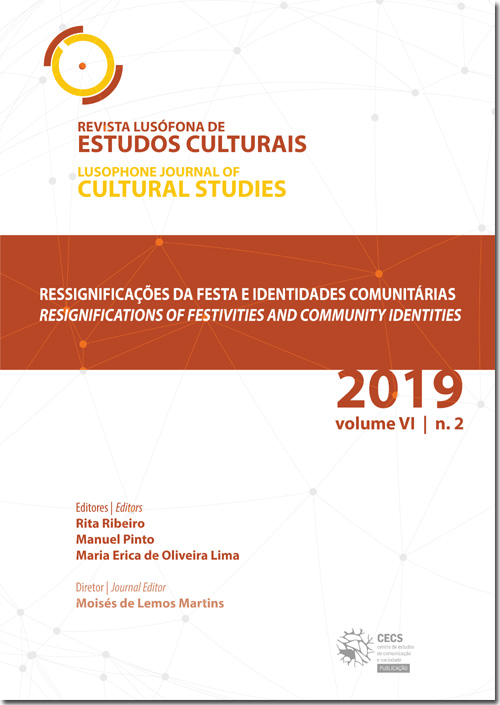New non-religious festivities in Spain
DOI:
https://doi.org/10.21814/rlec.2366Keywords:
Ethnohistory, festive rituals, Francoism, Spain, religiosityAbstract
Spanish society has undergone a profound transformation since the death of dictator Franco. One of its most relevant manifestations relates to popular festivities. The rigid Catholic morality that dominated the festive space, controlled by relentless censorship, gave way, with the democratization of political institutions, to profane festive behaviors, in which the playful aspect is central. This article aims to summarize the evolution of festive rituals in the last eighty years, highlighting the current trends and influences: secularization, coexistence of formal models, institutional interventionism, integration into the European framework, incorporation of women as protagonists, dynamism of associations and exaltation of military prowess. In this last point, we highlight the conversion of the scheme of struggle between two factions – which monopolized the celebrations of Moors and Christians, from medieval roots and based on the triumph of true religion – into civic-historical recollections (especially Roman and Napoleonic invasions) of profane and even pagan content, as is the case with recent and numerous festitivies in Galicia.
Downloads
References
Cabada, M. (1992). A rapa das bestas de Sabucedo. Historia e antropoloxía dunha tradición. Vigo: Ed. Ir Indo.
Capel, J. J. (2001). Origen histórico y argumentos de las Fiestas de Moros y Cristianos de Murcia. In R. Montes (Ed.), Moros y Cristianos (pp. 13-21). Murcia.
Casarrubios, C. G. (1993). Fiestas Populares del ciclo de primavera en la Comunidad de Madrid. Madrid: CEAC.
Díaz, M. del M., Blanco, J. & Saldaña T. (2004). Fiestas gastronómicas (Galicia). Corunha: La Voz de Galicia.
Francés, R. & Francés, J. M. (1986). Aportación de Campo de Mirra a los valores esenciales de la Fiesta de Moros y Cristianos. Actas do II Congreso Nacional de la Fiesta de Moros y Cristianos (pp. 285-286). Ontinyent: UNDEF.
Intxausti, A. (2003, 12 de abril). El comunismo continúa vigente como motivación y como utopía. Entrevista a Eric Hobsbawn. El País. Retirado de https://elpais.com/diario/2003/04/12/cultura/1050098401_850215.html
La Voz de Galicia (23 de agosto de 2005).
Lista, O. & Saldaña, T. (2004). Fiestas Históricas (Galicia). Corunha: La Voz de Galicia,
Ministerio de Información y Turismo (1973). Calendario Turístico 1974. Madrid.
Moreno, I. (1989). El estudio de los grupos para el ritual: una aproximación. In M. Luna (Ed.), Grupos para el ritual festivo (pp. 15-21). Murcia: Editora Regional.
Sánchez, M. A. (1998). Fiestas Populares. Madrid: Maeva.
Una tamborrada en la plaza Mayor despide la Semana Santa (2004, 11 de abril). El País. Retirado de https://elpais.com/diario/2004/04/11/madrid/1081682658_850215.html
Valdez, C. C. G. (1983). El teatro en Oviedo 1498-1700. Oviedo: CSIC-Univ.
Velasco, H. M. (2000). Tiempos modernos para fiestas tradicionales. In F. J. García Castaño (Ed.), Fiesta, tradición y cambio (pp. 99-128). Granada: Proyecto Sur Ed.
Downloads
Published
How to Cite
Issue
Section
License
Authors own the copyright, providing the journal with the right of first publication. The work is licensed under a Creative Commons - Atribuição 4.0 Internacional License.












